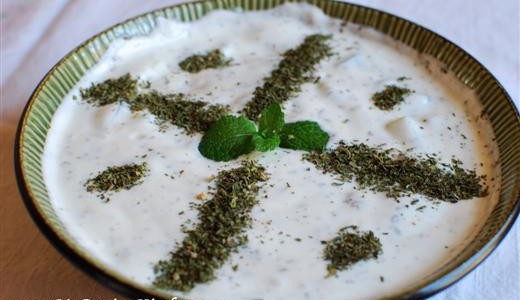 15 years ago
15 years ago
Mast-o-Khiar ~ Persian Yogurt & Cucumber Dip
Mast-o-khiar is such an easy and quick dip to make. Literally translated the name of this dip means yogurt and cucumber. It is one of the staples at Persian …
Read More
Leftover Herbs ~ Quick Chopping & Freezing
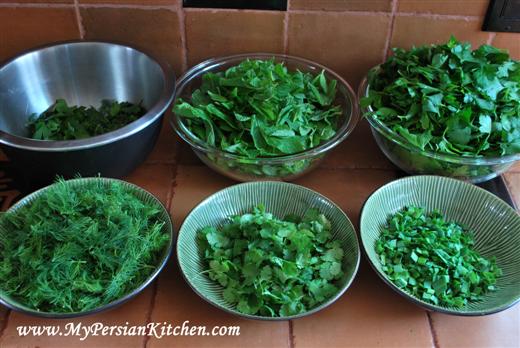
In the aftermath of our Norouz party we were left with a lot of left over fresh herbs. I knew exactly what to do with some of the parsley: Chimichuri, baby! But then I was still left with hell of a lot more parsley, cilantro, dill, chives, and mint.
Instead of just freezing each herb on its own I started to think ahead. I took in consideration future Persian dishes that I am planning on making and the amount of herbs needed for each dish when cooking for the two of us.  Since I had a bit of cilantro and chives left I decided to make a Sabzi Polow mix to be used sometime in the future.
The rest of the herbs I just measured and froze on their own.
Persian Rose
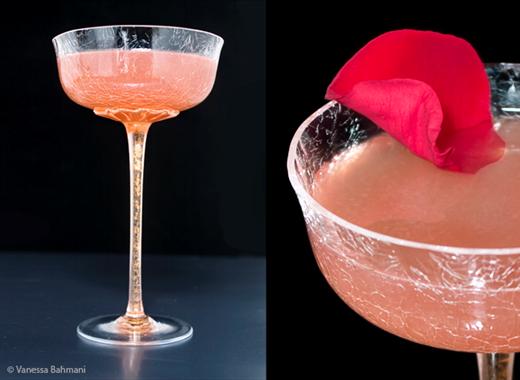
I am so excited and thrilled to feature a guest post by my friend Payman today. I met Payman last year around May or so through twitter. Payman is your go to guy for any cocktail that you might have any questions about. I love reading his weekly post where each Wednesday he introduces his readers to a new cocktail. I had the honor of meeting him and his lovely wife Vanessa last December while they were in town visiting his family. I thought it would be fun to ask him to come up with a cocktail and be a guest host on MPK. I hope you will enjoy this post as much as I did!
I present to you, Persian Rose!
Spring has finally arrived, which marks the beginning of a new year for the Persian Diaspora. However you don’t have to be Persian to appreciate the significance of Spring. For most cultures around the world—even the ones which observe the Gregorian calendar—Spring symbolizes hope, renewal, and perhaps casting off of the ills of the past.
For obvious reasons, many also associate the color green with Spring. Incidentally, for many Persians green has taken on a deeper significance these days than it did in years past. It has come to represent the aspirations of Iranians seeking a democratic government, having become the color adopted by the renewed freedom movement in Iran. It is said that hope springs eternal, so it’s all the more appropriate that the color of Spring has also become the color of national hope.
Since Sanam was kind enough to invite me to contribute to her blog, I decided to share a cocktail I recently created in celebration of the Persian New Year. The traditions of the Persian New Year, or Norooz as we Persians call it (which means “new day”) date back thousands of years to the time of the ancient prophet Zoroaster, whose philosophies were the basis of the Zoroastrian religion. Zoroastrianism, which predates the three Abrahamic religions (Judaism, Christianity, Islam; ironic how closely related those three religions are, right?), was the primary religion of Persians until the brutal Arab conquest in the 7th century.
The cocktail I created highlights traditional Persian flavors and ingredients, and despite all my waxing on, is not green in color. Ultimately it was too difficult to make a green-hued drink without coming off as contrived. In the end I realized it was more important to represent culture and history through ingredients and flavors common to Persian cuisine, than to simply present a color, which could have easily been done with a few drops of artificial food coloring. However as we’ve learned from both Iran’s democracy movement and the environmental movement—two movements that have embraced the symbolism behind the color green—the color itself is meaningless if it’s devoid of a meaningful underlying philosophy. That’s what I focused in creating this cocktail.
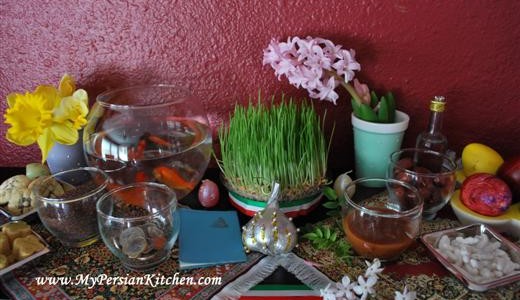 15 years ago
15 years ago
Sofreh Haft Seen ~ The 7 “S” of Norouz Spread
I finally set up my Haft Seen yesterday. I was waiting for the gold fish to hit the Persian stores. My Haft Seens have been slightly different every year …
Read More
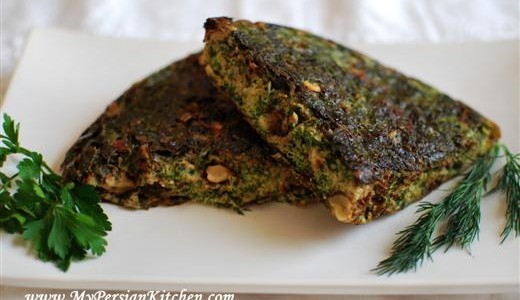 15 years ago
15 years ago
Kuku Sabzi ~ Persian Frittata With Fresh Herbs
Today’s post is the last of the recipes for the traditional meal consumed for Norouz.
Kuku Sabzi is by far my most favorite type of kuku. This dish is …
Read More
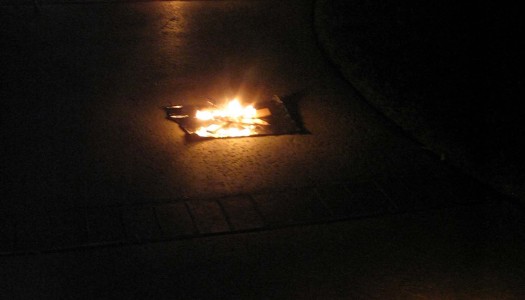 15 years ago
15 years ago
Chaharshabeh Souri ~ The Eve of The Last Wednesday of The Year
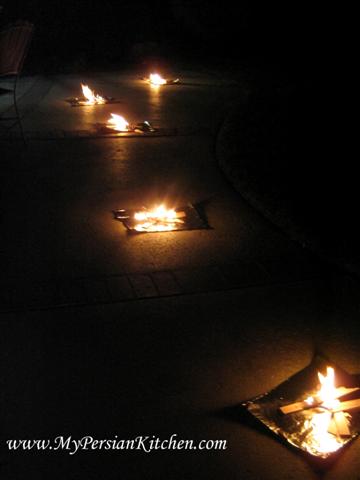
Tonight is a big deal in the Persian community. It is a night that many look forward to with much anticipation because there is much celebration in every household. As a kid I always looked forward to the festivities of Chaharshanbeh Souri. Small bonfires are set up for people to jump over the flames while reciting zardi-ye man az to, sorkhi-ye to az man, which loosely translated means “take my yellow and sickly color in exchange for your red color.†This is an old ritual which always takes place on the eve of the last Wednesday of the year.
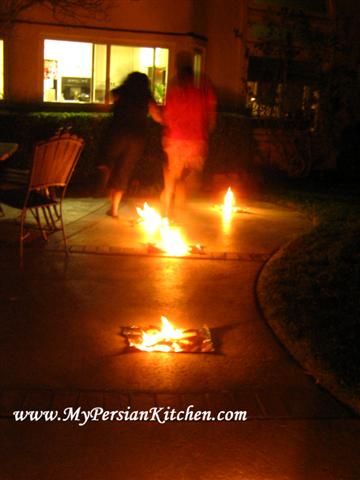
This ritual is centuries old and is associated with Zoroastrianism. The purpose of the phrase that is recited is to draw from the brightness and energy of the fire and release everything that is negative and sickly into the fire.
For me Chaharshanbeh Souri has not been the same since I left Iran. With this said, I have very fond memories of spending Charshanbeh Souri at my mom’s friend’s house Khaleh Firouzeh. Her daughter, and my childhood friend, Leyla whom I have mentioned around here before on this post, used to have a great time jumping over the fire together. I can’t say I have done anything as fun since moving to LA. But I have tried not to miss the fun and actually jump over a candle and recite zardi-ye man az to, sorkhi-ye to az man.
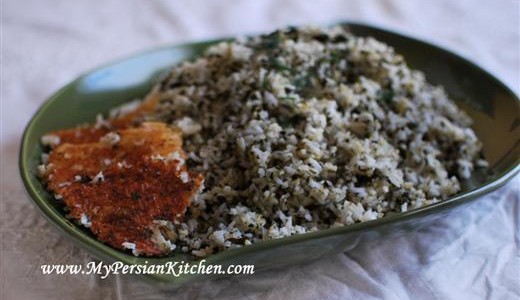 15 years ago
15 years ago
Sabzi Polow Mahi ~ Persian Herbed Rice with Fish
Norouz is only a few days away folks! Today’s post showcases yet another dish that it traditionally consumed for the Persian new year. Last week I posted Reshteh Polow …
Read More
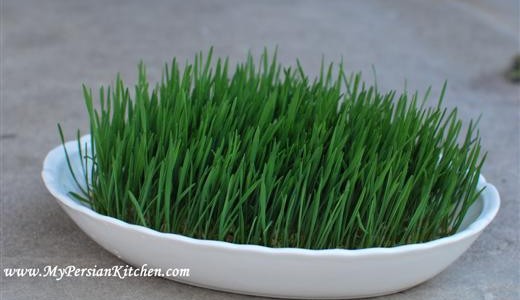 15 years ago
15 years ago
Sabzeh: Norouz Sprouts
One of the elements of Haft Seen is Sabzeh, sprouts. Sabzeh is actually one of the first things that are prepared for the spread as …
Read More
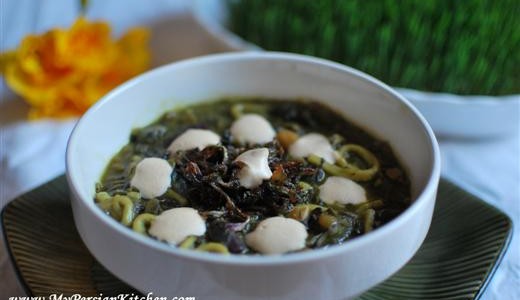 15 years ago
15 years ago
Asheh Reshteh ~ Persian Noodle Soup
Asheh Reshteh is a delicious hearty soup that is part of the Norouz menu. Reshteh in Farsi means noodles. This soup is made with Persian noodles which are flat, …
Read More
Khasegari ~ Persian Engagement
Last spring The Sous Chef and I had a Persian Wedding Ceremony. I was pleasantly surprised at how much interest there was in the ceremony and how every time I …
Read More






